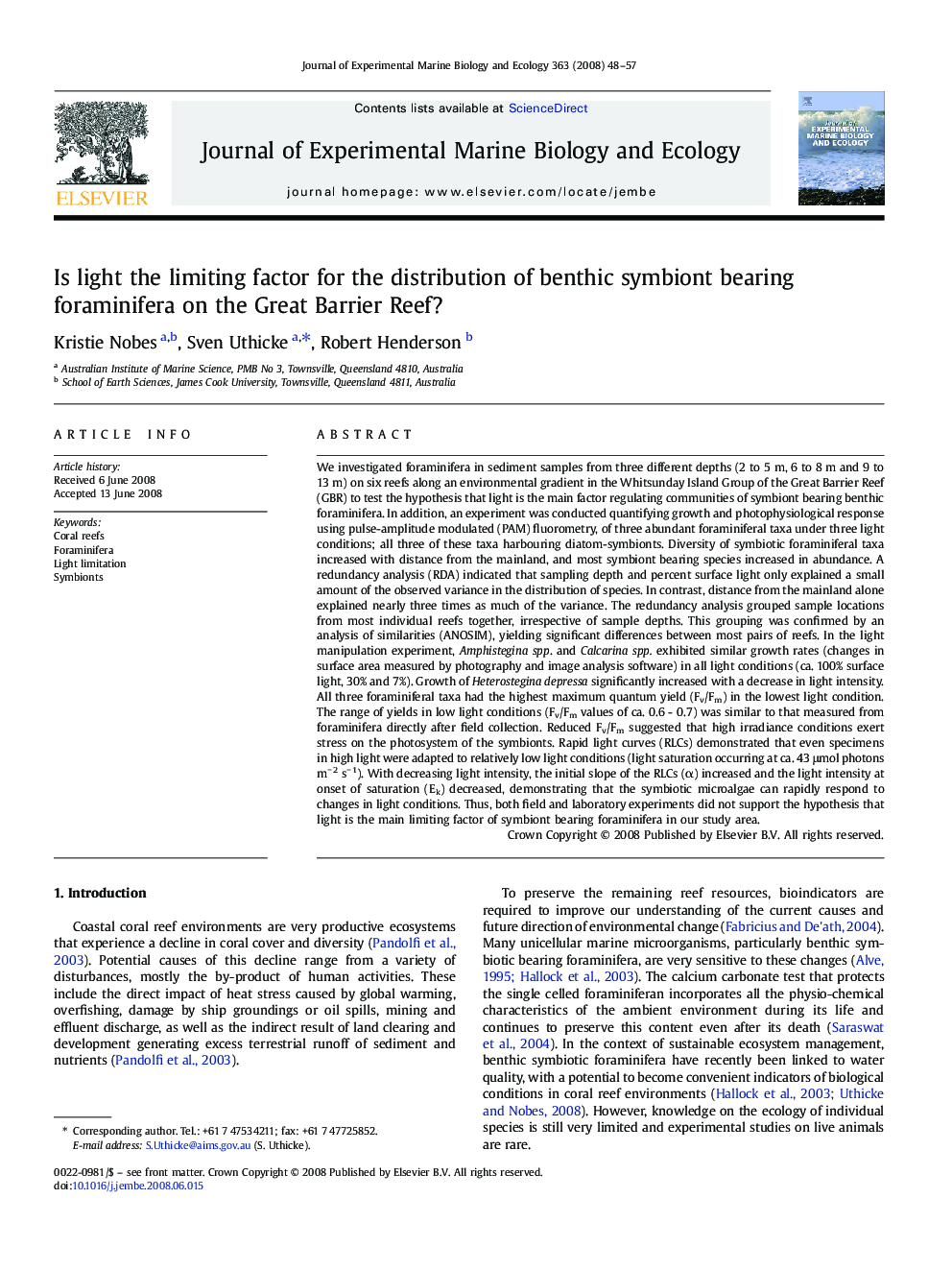| کد مقاله | کد نشریه | سال انتشار | مقاله انگلیسی | نسخه تمام متن |
|---|---|---|---|---|
| 4397275 | 1618484 | 2008 | 10 صفحه PDF | دانلود رایگان |

We investigated foraminifera in sediment samples from three different depths (2 to 5 m, 6 to 8 m and 9 to 13 m) on six reefs along an environmental gradient in the Whitsunday Island Group of the Great Barrier Reef (GBR) to test the hypothesis that light is the main factor regulating communities of symbiont bearing benthic foraminifera. In addition, an experiment was conducted quantifying growth and photophysiological response using pulse-amplitude modulated (PAM) fluorometry, of three abundant foraminiferal taxa under three light conditions; all three of these taxa harbouring diatom-symbionts. Diversity of symbiotic foraminiferal taxa increased with distance from the mainland, and most symbiont bearing species increased in abundance. A redundancy analysis (RDA) indicated that sampling depth and percent surface light only explained a small amount of the observed variance in the distribution of species. In contrast, distance from the mainland alone explained nearly three times as much of the variance. The redundancy analysis grouped sample locations from most individual reefs together, irrespective of sample depths. This grouping was confirmed by an analysis of similarities (ANOSIM), yielding significant differences between most pairs of reefs. In the light manipulation experiment, Amphistegina spp. and Calcarina spp. exhibited similar growth rates (changes in surface area measured by photography and image analysis software) in all light conditions (ca. 100% surface light, 30% and 7%). Growth of Heterostegina depressa significantly increased with a decrease in light intensity. All three foraminiferal taxa had the highest maximum quantum yield (Fv/Fm) in the lowest light condition. The range of yields in low light conditions (Fv/Fm values of ca. 0.6 - 0.7) was similar to that measured from foraminifera directly after field collection. Reduced Fv/Fm suggested that high irradiance conditions exert stress on the photosystem of the symbionts. Rapid light curves (RLCs) demonstrated that even specimens in high light were adapted to relatively low light conditions (light saturation occurring at ca. 43 μmol photons m− 2 s− 1). With decreasing light intensity, the initial slope of the RLCs (α) increased and the light intensity at onset of saturation (Ek) decreased, demonstrating that the symbiotic microalgae can rapidly respond to changes in light conditions. Thus, both field and laboratory experiments did not support the hypothesis that light is the main limiting factor of symbiont bearing foraminifera in our study area.
Journal: Journal of Experimental Marine Biology and Ecology - Volume 363, Issues 1–2, 20 August 2008, Pages 48–57